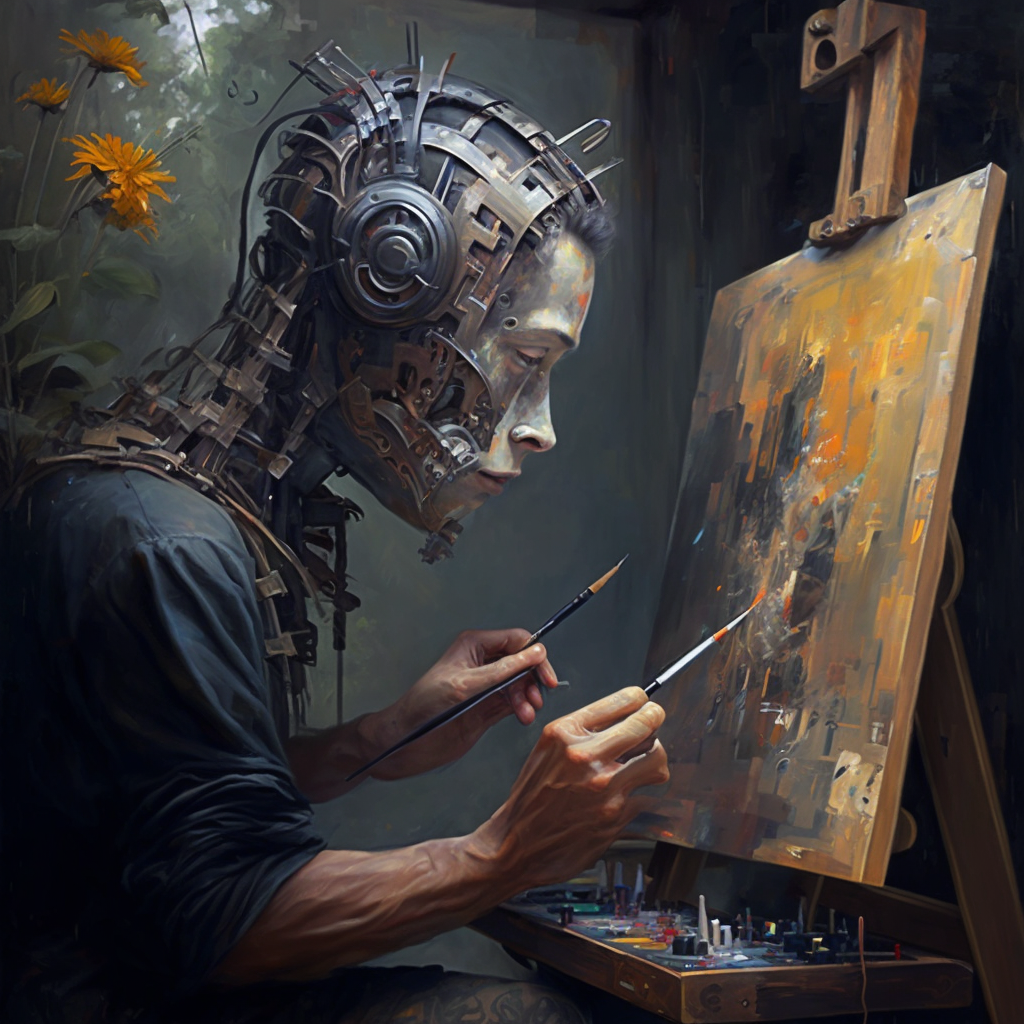The future is here; Artificial Intelligence (A.I. or simply, AI) has hit the mainstream. OpenAI’s ChatGPT has surprised everyone (apparently, even OpenAI themselves) with just how useful it actually can be.
As a designer, I’m always looking for fun, new, and innovative ways to bring my ideas to life. Until recently, this has mostly been manually writing code or pushing pixels in design tools. But with the growing rise of freely (or cheaply) available AI tools, it’s become possible to create unique and engaging designs with just a few clicks — or, just a few words.
Just to temper any expectations: We haven’t reached The Singularity. The AI I’m referring to isn’t sentient, or really even very smart. But, like any tool, with the right usage these “generative” AI’s can augment your daily lives in unexpected ways. I’ve only begun to scratch the surface, but what I’ve learned has me very excited for the possibilities. (And maybe a little wary of the abuses…)
There’s probably a lot more AI tools out there, but the one I’m most familiar with — and the one everyone is talking about — is a natural language “chatbot” named ChatGPT.

You can signup and try ChatGPT for free and see how it works for yourself. Eventually there will likely be some cost required to use the AI.
The experience is like having a conversation with a person. You type your prompts just like you word send a text to a friend, using “natural language” — and the AI responds in kind, also using natural language. Its very easy to find yourself in awe of the responses and forget that there isn’t a person on the other side of the chat box.
Like many people, my first dozen conversations with ChatGPT were mostly like an interactive Google search or a Siri voice request; I would simply ask for the AI to answer a question, like “Who won the Super Bowl in 1999?”

Truth be told, this is still really impressive, but not much more helpful than asking Siri or Alexa, or typing the same question into a web search.
Where things get really interesting are when you ask the AI to create something new. For example, one thing I’ve found to be really helpful is to ask the AI to give me a dozen variations for some tagline or text within an application’s interface.

It’s impressive to watch the AI type out a bunch of taglines with similar language and messaging. In the example above, the AI identifies the branded name “Blaze” and offers associated words like “Ignite” and “Accelerate.” These are connection that my meat-based brain didn’t make on it’s own, but with the augmented power of AI I’m able to consider fresh and new ideas much quicker.
One of the best parts about ChatGPT is its awareness of conversational history and context; The AI is able to remember previous requests and can build on responses over time. This is incredibly powerful.
This context-awareness means you can build knowledge overtime with the AI, and have it do really complex things you wouldn’t expect to be possible.
On such example that I’ve used a few times is to tell the AI to pretend to be a specific person. I start by giving the AI some foundational understanding of this person, their experience, wants, and needs — and then ask the AI to respond as if they were this person.

This is a new take on an age-old UX Design tool called personas, where you define a set of fictional characters as a way to frame the needs of your audience and their experience with your product.
But with AI, you can have a conversation with these characters.
At first, this process is a little cumbersome. I found myself stopping the AI mid-sentence and correcting it to better match what I wanted. Its funny, at first I felt bad interrupting the AI; It felt rude.
But over time, I’ve gotten better at crafting my requests to get my desired response. Just like any other tool, there’s a little learning curve to using AI, and this is a part of it.

Now obviously the persona character is not real, and the AI is missing a lot of information to really pretend to be a specific person. You quickly learn a secret about ChatGPT…
…the AI is really good at spewing complete and total nonsense. Its also really good at being influenced towards your own personal biases.
However, its still a very useful exercise and it shows how creative uses of AI like ChatGPT can augment your own brainstorming and thinking to come to ideas and solutions that would have otherwise been missed.

Leave a Reply